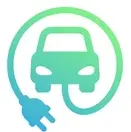The latest count of public EV chargers has swelled to 192,000. According to the U.S. Department of Energy, this number has doubled since the Biden administration took office and is continuing to grow at a rapid rate of 1,000 new chargers every week.
Along with the announcement comes the awarding of $521 million in grants to further expand charging access across the U.S. highway system. This includes 29 states, the District of Columbia, and two Federally Recognized Tribes—a total of 9,200 new EV charging ports.
“The Biden-Harris Administration has been clear about America leading the EV revolution, and thanks to the historic infrastructure package, we’re building a nationwide EV charger network to make sure all drivers have an accessible, reliable, and convenient way to charge their vehicles,” said U.S. Secretary of Transportation Pete Buttigieg. “The awards that we’re announcing today will build on this important work and will help ensure that the cost savings, health and climate benefits, and jobs of the EV future are secured for Americans across the country.”
The growth rate is rather impressive, actually. In mid-January, the U.S. government reported more than 169,000 chargers were deployed and online, meaning a 14% growth in just seven months. The number of chargers deployed weekly has also grown by 11%—from 900 to 1,000—during the same period.


Excellent news, but chargers won’t help much if most people still can’t afford the cars.
I suggest a generous cash-for-guzzlers trade-in program that gives anyone who owns or is paying down a gas vehicle the option to trade it in for an electric vehicle. It should be an even swap if the trade-in was fully paid off (year or model shouldn’t matter, as long as it drives). And if there’s still a balance on the trade-in, the payments should transfer over to the new electric car, the price of which should be adjusted so the remaining number of payments doesn’t change. Make it as seamless and frictionless as possible, and people will wait in line for this shit.
I couldn’t disagree more vehemently.
This program might make sense if we had some ~200 million EVs sitting around gathering dust, but there simply aren’t enough EVs, batteries, or available lithium for a program like this to make any sense economically.
Plus, what are we supposed to do with all of the relatively new ICE vehicles that get traded? Just put them in a dump somewhere?
No, the infrastructure isn’t nearly in place at this point and EVs aren’t a perfect solution for everyone. There’s no reason we need to try to switch everything all at once. We will be likely be transitioning for 50+ years, and that’s okay.
We should keep that in mind for ten years from now.